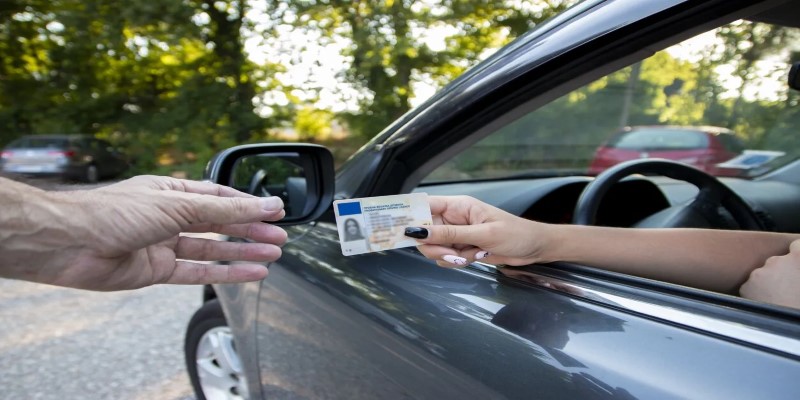What Affects Your Car Insurance Premium the Most? Here's What You Should Know
Have you ever opened your car insurance bill and wondered, 'Why does it cost that much?' Why is your friend with a flashier car paying less than you? Or why did your premium go up even though you haven't filed a single claim?
Car insurance premiums are anything but random. There are specific factors that companies use to decide what you'll pay. And while some of these are in your control, others may surprise you. If you're thinking about shopping for new insurance or just trying to understand your current rates, here's what makes your premium rise—or fall. Let’s take a closer look at the most significant factors that affect your car insurance premium.
Your Driving Record Says A Lot About You

Think of your driving history as your insurance report card. Every ticket, every accident—these are red flags to insurers. If you've been involved in crashes (even if you weren't at fault) or if you've racked up speeding tickets, your premium is likely to be higher.
On the other hand, a clean record can work in your favour. Some insurance companies even reward you with lower rates if you've gone several years without any violations or claims.
Tip: Defensive driving courses can sometimes help lower your premium, especially if you've had a few bumps in the road—literally.
Age and Experience—It’s Not Just About the Number
Age plays a significant role, especially for newer drivers. Teens and those in their early 20s tend to pay more—sometimes double or triple the average rate. That's because, statistically, younger drivers are more likely to be in accidents.
But it’s not all bad news. Once you reach your mid-20s and have a few years of driving under your belt, you’ll likely see your premium decrease—provided you keep that driving record clean.
Interesting fact: Drivers in their 50s often get the best rates of all age groups.
The Car You Drive Isn’t Just a Status Symbol
You might love your car for its appearance or driving performance—but your insurer views it very differently.
Cars with high repair costs, poor safety ratings, or that are more likely to be stolen tend to cost more to insure. On the other hand, a vehicle with advanced safety features and low replacement costs could help reduce your premium.
Here’s a quick comparison:
• A sports car with a turbo engine? It's likely a higher premium.
• A midsize sedan with excellent safety ratings? Generally cheaper to insure.
Pro tip: Before buying a new car, check the insurance rates on different models—it might save you more than you expect.
Where You Live Can Make a Big Difference
City or countryside? Busy metro or quiet suburb? Your ZIP code plays a surprising role in your insurance rate.
Urban areas usually mean more traffic, higher chances of accidents, and more vehicle theft—all things that can drive up your premium. On the other hand, rural areas often come with lower rates due to fewer accidents and claims.
Example: Someone in a dense part of Los Angeles might pay a lot more than a driver in a small town in Idaho, even if everything else is identical.
How Much You Drive Matters
Do you use your car to commute an hour each way? Or just for errands on weekends?
The more you’re on the road, the higher the chances you'll get into an accident. That's why insurers often ask about your annual mileage. Individuals who drive fewer miles may be eligible for low-mileage discounts.
A quick tip: If you’ve started working remotely and no longer commute, be sure to notify your insurer. It could help reduce your bill.
Coverage Level and Deductible: The Trade-Off
Your premium is directly affected by the amount of coverage you choose—more coverage = higher premiums. However, the level of protection is also significantly higher.
Choosing a higher deductible (what you pay before insurance kicks in) can lower your monthly premium. Just make sure you can afford that amount in case something does happen.
Scenario: Opting for a $1,000 deductible instead of $500 might lower your premium, but you’ll pay more out-of-pocket if you’re in an accident.
Credit History—Yes, It Can Affect Your Rate

In many states, your credit score can influence your insurance premium. Insurers have identified a statistical correlation between credit behaviour and the likelihood of filing claims.
Therefore, if your credit is in good standing, you may be eligible for lower rates. On the other hand, a poor credit score can lead to higher premiums.
Note: A few states have banned the use of credit scores in setting car insurance rates, so it depends on where you live.
Gender and Marital Status—It’s More Than Just Demographics
Believe it or not, your gender and marital status might factor into your rate. Statistically, single male drivers—especially younger ones—tend to file more claims than their married or female counterparts.
Stat snapshot:
• Married drivers often see a slight drop in premiums.
• Some insurers charge less to female drivers under 25, based on historical accident data.
Again, the exact impact varies by location and company, but it’s worth being aware of.
Claims History—Even One Can Count
Even if an accident wasn't your fault, it could still result in a premium increase. Insurance companies review your overall claims history to assess your risk.
Multiple claims, even small ones, can flag you as a high-risk individual. It's why many drivers choose to pay out of pocket for minor repairs instead of filing a claim.
Reminder: Some companies offer "accident forgiveness" to long-time customers with a clean record.
Making Smart Moves With Your Premium
Now that you know what affects your premium the most, the big takeaway is this: knowledge gives you leverage. Some factors—like your age or where you live—aren't so easy to change. However, others, such as your driving behaviour, mileage, and coverage choices, are things you can actively manage.
Shopping around, staying informed, and being strategic can make a significant difference. Even small changes, such as adjusting your deductible or driving a safer vehicle, can lower your costs over time.
So next time you see that insurance bill, you won’t have to guess why it’s high or low. You’ll know exactly what’s behind the number—and maybe even how to change it.





